Come along as we embark on an enchanting journey through England’s largest man-made lakes, where morning mist meets serene waters and history intertwines with modern engineering. From Grafham Waters to Derwent Reservoir, these water bodies provide resources, recreational havens, and stories of human ingenuity. We explore their depths, unlocking secrets that have shaped landscapes and communities for generations. Grab your fishing gear and join us as we discover the nine largest man-made lakes in England.
Reservoirs in England
Reservoirs play a crucial role in water management and supply in England. These artificial bodies of water result from damming rivers or streams to store water for various purposes, including domestic supply, irrigation, hydropower generation, and flood control. England is home to 500-600 reservoirs distributed across the country. These reservoirs not only provide drinking water to millions of people but also offer recreational opportunities. Reservoirs in England continue to be essential assets in managing water resources, particularly as the country faces challenges related to population growth, climate change, and water scarcity.
1. Kielder Water
Kielder Water is a man-made reservoir located in Northumberland, England. It is located within the Kielder Forest, which is one of the largest man-made forests in Europe. When measured by capacity, Kielder Water is the largest reservoir in all of England. The reservoir resulted from damming the North Tyne River. Construction began in 1975 and ended in 1982. Kielder Water provides water for the nearby city of Newcastle upon Tyne and its surrounding areas. It is also instrumental in flood control and hydroelectric power generation. At full pool, Keilder Water can hold 528,500,000 gallons (200 billion liters). Kielder Water has a surface area of approximately 2,680 acres (11 km²) and a maximum depth of 170 feet (50 m).
The reservoir and surrounding forest offer numerous recreational opportunities, including walking trails, cycling paths, water sports (such as sailing and canoeing), fishing, and stargazing. The area has incredibly dark skies. In fact, it is a Dark Sky Park, making it an excellent spot for astronomy buffs. Kielder Forest and the reservoir are home to a diverse range of flora and fauna. The area is a sanctuary for various species of birds, including ospreys, and it supports populations of red squirrels and roe deer. Kielder Observatory is a popular attraction for both amateur and professional stargazers. It offers educational programs and events focused on astronomy and space exploration.
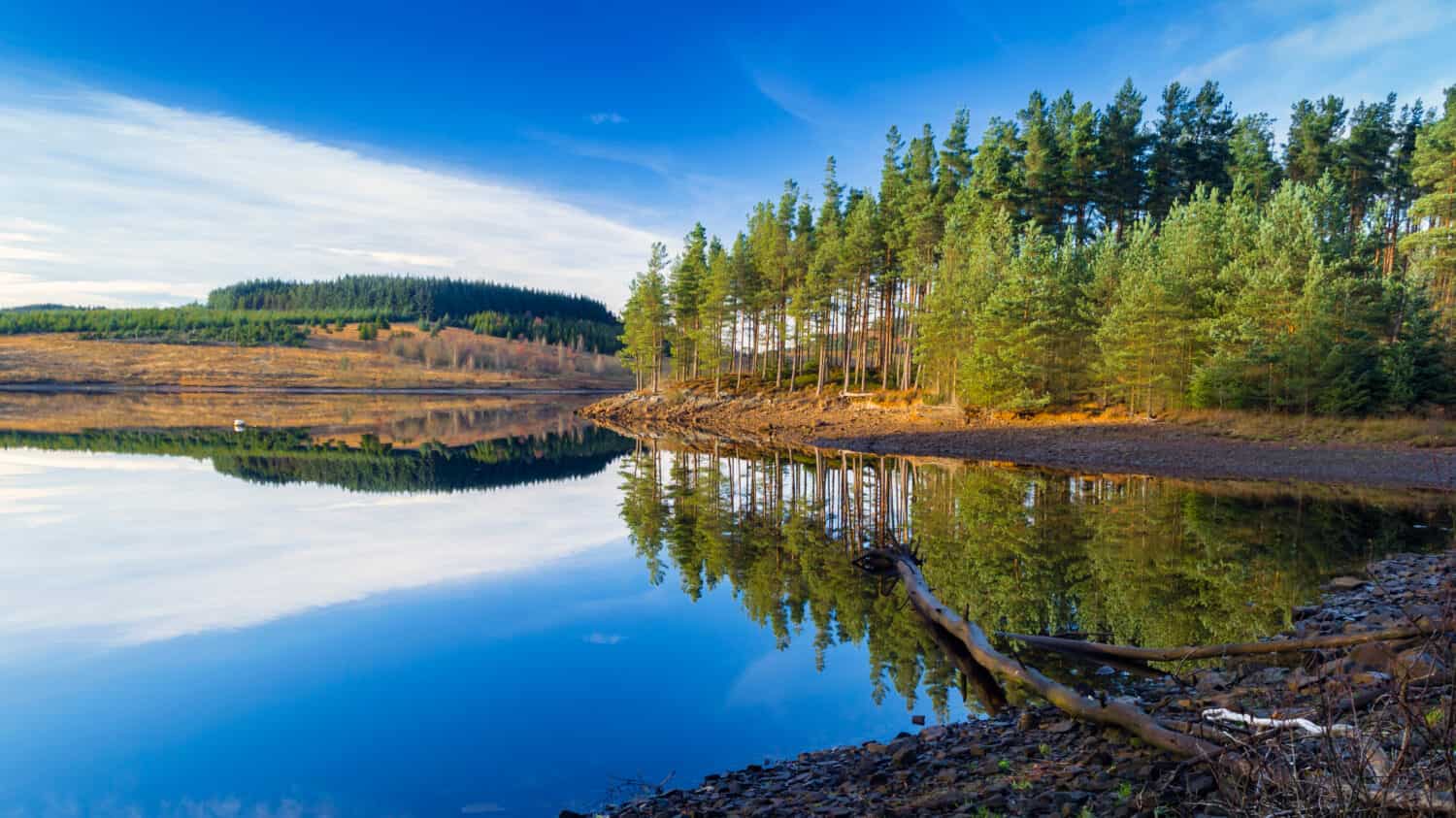
When measured by capacity, Kielder Water is the largest reservoir in all of England.
©Rickforduk/Shutterstock.com
2. Rutland Water
Rutland Water is a large artificial lake located in Rutland, England. It was created in the 1970s as a reservoir to meet the increasing water demand in the East Midlands region of the United Kingdom. Covering an area of 3,100 acres (1,254 hectares), Rutland Water has the largest surface area among all reservoirs in England. It is also one of the largest artificial lakes in Europe. Rutland Water is a popular destination for locals and tourists alike. This is because Rutland Water offers a wide range of water sports activities. Visitors can enjoy sailing, windsurfing, canoeing, kayaking, and paddleboarding. The reservoir and its surrounding wetlands are a haven for birdwatchers. Rutland Water features rich biodiversity and serves as a significant habitat for both resident and migratory bird species.
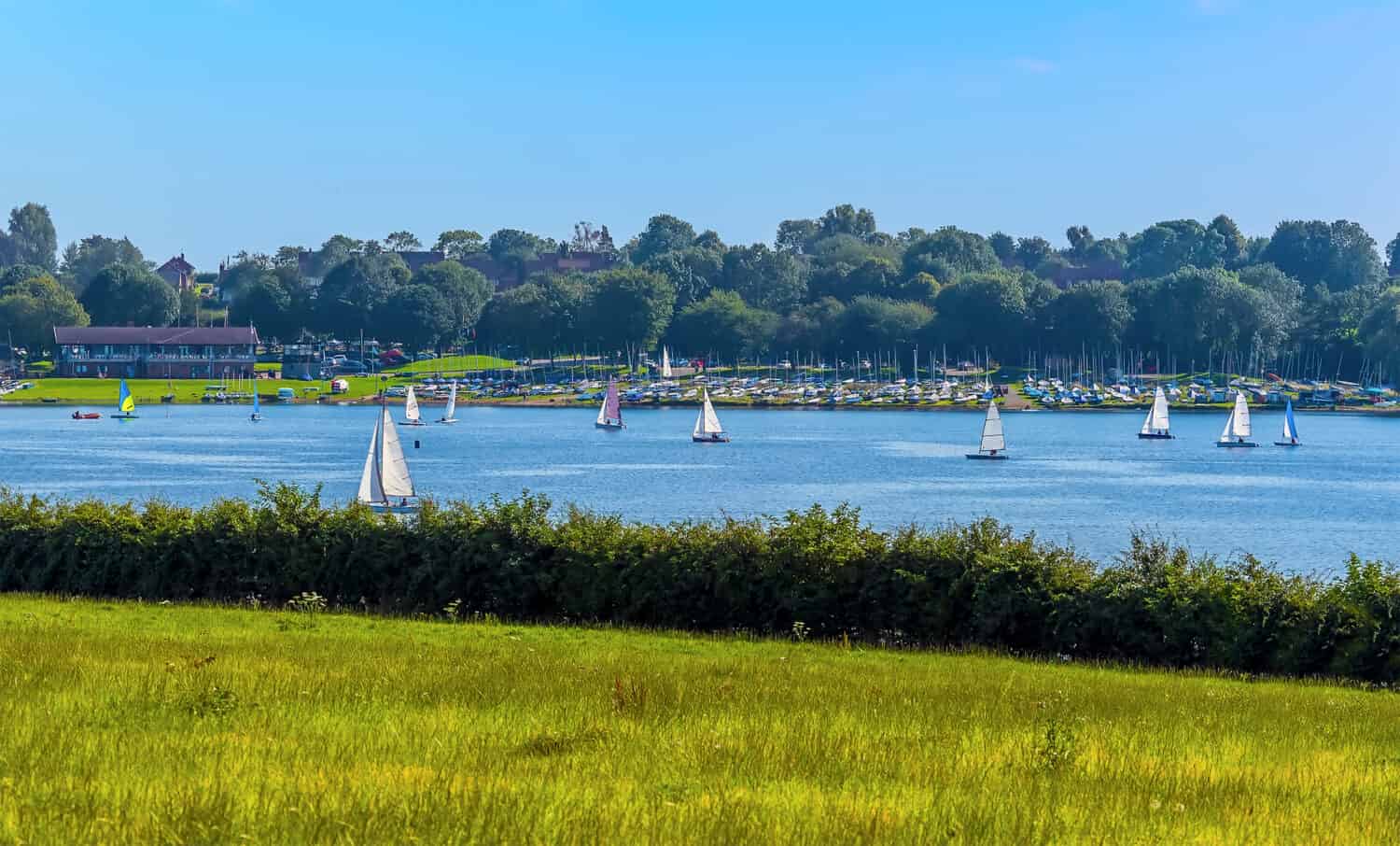
Visitors to Rutland Water can enjoy sailing, windsurfing, canoeing, kayaking, and paddleboarding.
©Nicola Pulham/Shutterstock.com
The lakeside area features a network of well-maintained cycling and walking trails, offering visitors a chance to explore the countryside and enjoy beautiful views of the water. The lake has a designated beach area where visitors can relax, sunbathe, and have picnics during the warmer months. It’s a popular spot for families and offers a safe environment for children to play. Rutland Water has excellent fishing opportunities. The lake contains a variety of fish, including trout, pike, and perch, making it a favored destination for anglers. The lake’s serene beauty, along with its diverse range of activities, makes it a popular destination for day trips, weekend getaways, and outdoor adventures.
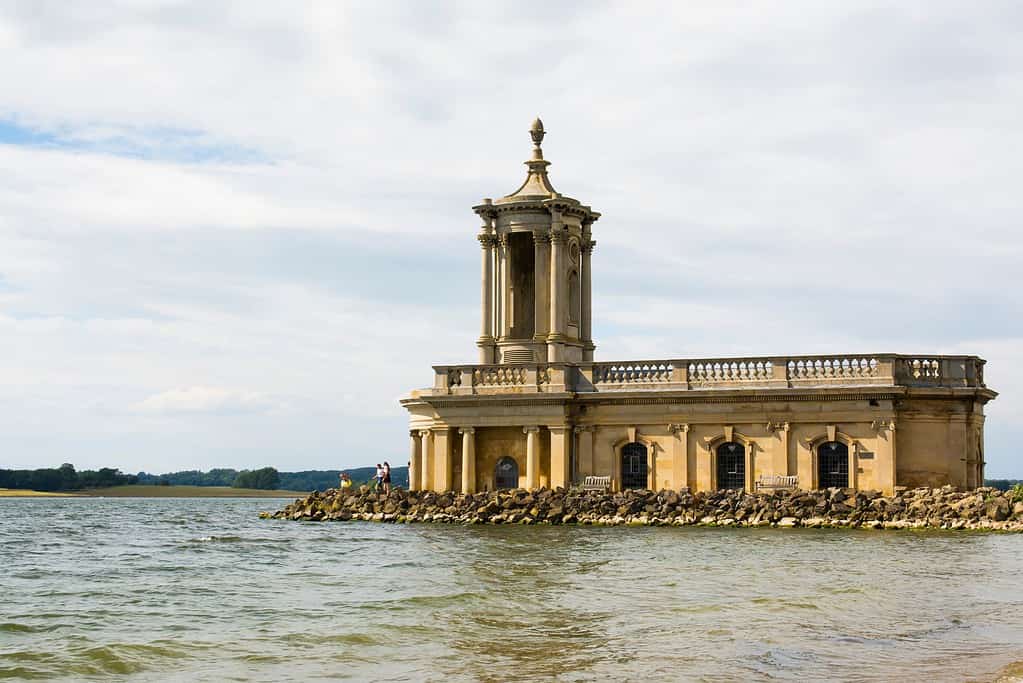
Rutland Water is a popular destination for locals and tourists alike.
©PannaPhoto/Shutterstock.com
3. Queen Mary Reservoir
Queen Mary Reservoir is located between the towns of Ashford and Littlton in the Borough of SpelthorneIt. It is an essential part of London’s water supply, ensuring a reliable source of clean drinking water for millions of people. The reservoir is close to Heathrow Airport and covers an area of approximately 707 acres (286 hectares). It is a fully bunded non-impounding reservoir, meaning it is not associated with a dam.
Construction of the reservoir commenced in 1915, officially opening in June 1925. It provides a reliable and sufficient supply of drinking water to London’s growing population. It is one of the many reservoirs that form part of the Thames Water supply network. The reservoir has a significant storage capacity, which plays a crucial role in storing water during periods of high rainfall. The region uses this stored water during drier periods to maintain a steady water supply.
Queen Mary Reservoir’s recreational facilities, particularly for sailing and watersports, make it a popular spot for outdoor activities and leisure. The lake is well-known for its sailing facilities and is home to the Queen Mary Sailing Club. The club offers opportunities for sailing, windsurfing, and other watersports, making it a popular destination for aficionados and competitions. The reservoir and its surroundings are also popular among walkers and birdwatchers. There are walking trails along the reservoir’s banks and designated areas for birdwatching, where visitors can observe a variety of waterfowl and bird species.
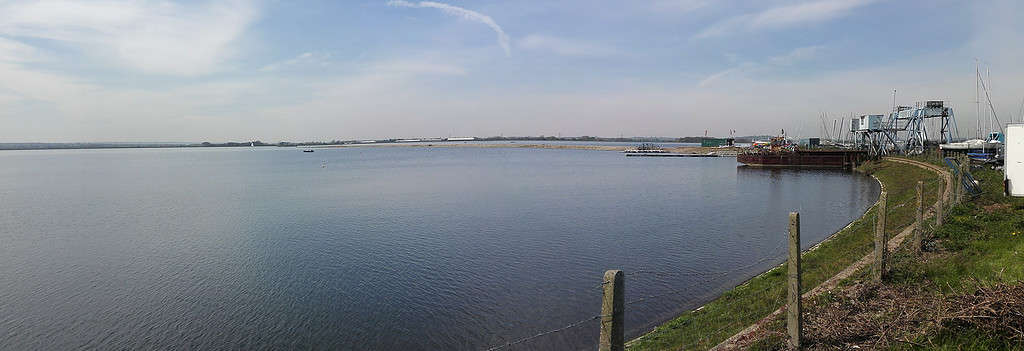
Construction of Queen Mary Reservoir commenced in 1915, officially opening in June 1925.
4. Grafham
Grafham Water is another significant reservoir located in England. It is in Cambridgeshire, approximately five miles southwest of the town of Huntingdon. Grafham Water was constructed in the 1960s to serve as a storage reservoir for drinking water. It is an essential part of Anglian Water’s network, helping to meet the water demands of both domestic and industrial consumers in the surrounding areas.
The reservoir covers an area of approximately 2000 acres (800 hectares). It has a maximum depth of 69 feet (21 m). Grafham Water is a popular destination for outdoor activities. The reservoir and its surrounding parkland provide opportunities for fishing, sailing, windsurfing, canoeing, and kayaking.
This area attracts a diverse array of bird species, making it a popular spot for birdwatching. Grafham Water Nature Reserve is designated a Site of Special Scientific Interest (SSSI) and is home to a variety of waterfowl and other wildlife. It has a network of walking and cycling trails, allowing visitors to explore the beautiful countryside and enjoy scenic views. Grafham Water provides a splendid balance between water supply functions and recreational opportunities.
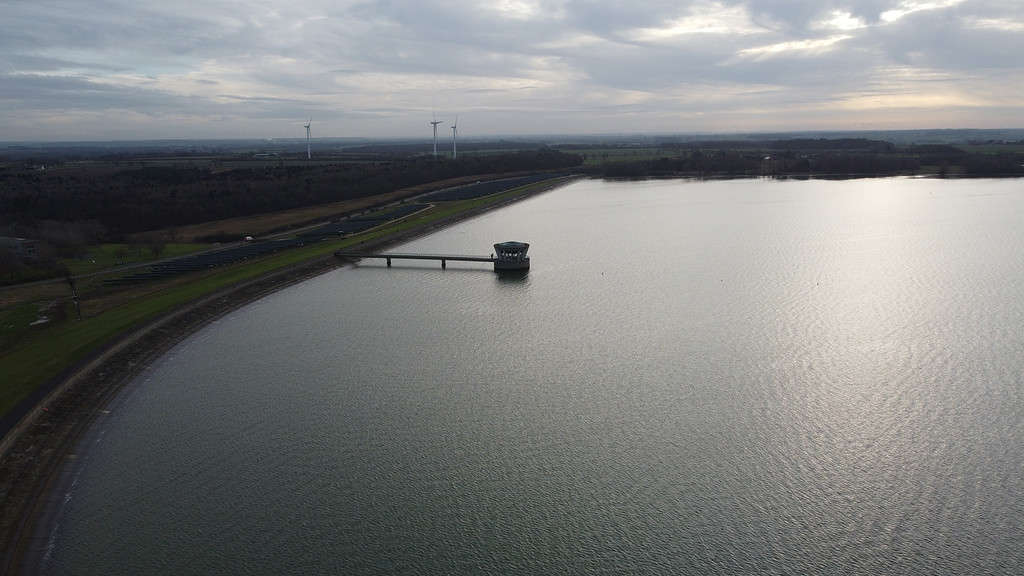
Grafham Water Nature Reserve is a Site of Special Scientific Interest (SSSI).
©Paweucio/Shutterstock.com
5. Abberton
Abberton Reservoir is located in Essex, England. It is an important water supply reservoir serving the needs of the local communities in the region. Abberton Reservoir provides a reliable source of drinking water for the surrounding area. It is key in supplying water to households, industries, and agriculture in Essex. Construction of the reservoir began in 1935 and ended in 1939. It involved the damming of the Layer Brook, though most of the water in Abberton Reservoir now comes from the River Stour.
Abberton Reservoir covers an area of approximately 1,730 acres (700 hectares). It is one of the largest reservoirs in the United Kingdom in terms of surface area. Abberton Reservoir has developed into an essential habitat for a wide range of bird species. It is a Site of Special Scientific Interest (SSSI) and a Ramsar Wetland of International Importance due to its significance as a breeding ground and wintering site for various waterfowl, including cormorants and grebes. The reservoir and its surroundings offer recreational activities such as birdwatching, fishing, and walking. Several designated bird blinds allow visitors to observe and enjoy the diverse birdlife without disturbing it.

Abberton Reservoir is a significant breeding ground and wintering site for various waterfowl.
©Nigel J. Harris/Shutterstock.com
6. Derwent Reservoir
Derwent Reservoir is located in Northeast England, in County Durham. The reservoir is located in the Lake District, surrounded by scenic landscapes and rolling hills. Derwent Reservoir was constructed in the 1960s to serve as a vital water supply source for the cities of Durham, Sunderland, and South Tyneside.. The reservoir plays a crucial role in providing clean drinking water to thousands of residents and industries in the region. Derwent Reservoir covers a considerable area, approximately 1,000 acres (404 hectares). The reservoir is 100 ft (30m) deep and holds 11,000 million gallons (50,000,000 m³) at full pool.
The reservoir and its surrounding woodlands and moorlands offer various recreational activities. Visitors can enjoy walking and cycling trails with stunning views of the water and the countryside. The area is popular for those seeking tranquility and natural beauty. Derwent Reservoir is well-known for its sailing facilities. The Derwent Reservoir Sailing Club is based on its shores and offers opportunities for sailing and windsurfing. The Derwent Reservoir Country Park manages the area around the reservoir. The park offers parking areas, picnic areas, and walking trails.

Derwent Reservoir is located in the Lake District, surrounded by scenic landscapes and rolling hills.
©Chris Waistle/Shutterstock.com
7. Hanningfield
Hanningfield Reservoir is located near the village of Hanningfield. The reservoir serves multiple purposes, including water supply, flood control, and recreation. Hanningfield Reservoir was constructed in the 1950s and 1960s to provide a reliable source of drinking water for the surrounding areas, including parts of Essex and Greater London. It stores water during wet periods and releases it during drier periods to maintain a steady water supply.
The reservoir covers an area of approximately 870 acres (352 hectares). It has a substantial storage capacity to meet the water demands of the region. Hanningfield Reservoir features excellent fishing opportunities, particularly for anglers looking to catch trout, pike, and perch. The reservoir is popular among fishing enthusiasts, and it hosts several fishing competitions throughout the year.
The Hanningfield Sailability, a sailing club based on the reservoir’s shores, offers facilities and opportunities for sailors of all stripes. The reservoir and the adjacent nature preserve provide valuable habitat for various bird species, including wintering wildfowl and resident waterfowl. The area is designated as a Site of Special Scientific Interest (SSSI) due to its ecological importance.
The area around the reservoir offers visitors several walking trails and bird blinds from which to observe and enjoy the diverse wildlife in its natural setting. Whether you’re interested in fishing, sailing, birdwatching, or simply enjoying a leisurely stroll in nature, Hanningfield Reservoir offers a peaceful and scenic environment in which to explore and appreciate nature’s beauty.

Hanningfield Reservoir and its surrounding nature provide valuable habitat for various bird species.
©Jason Salmon/Shutterstock.com
8. Thirlmere
Thirlmere is a reservoir located in the Lake District National Park in Cumbria, England. It is in the valley of the River Wythburn, between the towns of Keswick and Ambleside. The reservoir was created in the late 19th century. It supplies water to the city of Manchester, which is approximately 95 miles to the southeast. Thirlmere Reservoir officially opened in 1894 to meet the increasing water demand of the rapidly growing city of Manchester during the Industrial Revolution. It was created by building a dam across the valley, flooding the original Thirlmere Lake and adjacent farmland.
The reservoir covers an area of approximately 371 hectares (918 acres). It has a substantial storage capacity and serves as one of the major water supply sources for Manchester.
Thirlmere is stunningly beautiful, surrounded by the landscapes of the Lake District. The reservoir lies within fells and mountains, making it a popular destination for nature lovers.
The area around Thirlmere offers several walking and hiking trails, providing visitors with opportunities to explore the scenic surroundings. Some popular walks include the circuit around the reservoir and hikes up nearby peaks. Because Thirlmere is primarily a water supply reservoir, it is available for recreational water sports like sailing or boating. These regulations keep the water supply unspoiled.
Fhirlmere Aqueduct
The creation of Thirlmere Reservoir was controversial as it involved flooding a valley and changing the landscape significantly. To transport water from Thirlmere to Manchester, a gravity-fed aqueduct was constructed, known as the Thirlmere Aqueduct. This engineering marvel spans over 96 miles and remains an important part of Manchester’s water supply infrastructure. Construction began in 1897 and was completed in 1925. Thirlmere is not only a vital source of water for Manchester but also a significant cultural and historical landmark in the Lake District. Its scenic beauty, hiking opportunities, and tranquil atmosphere make it a popular destination.
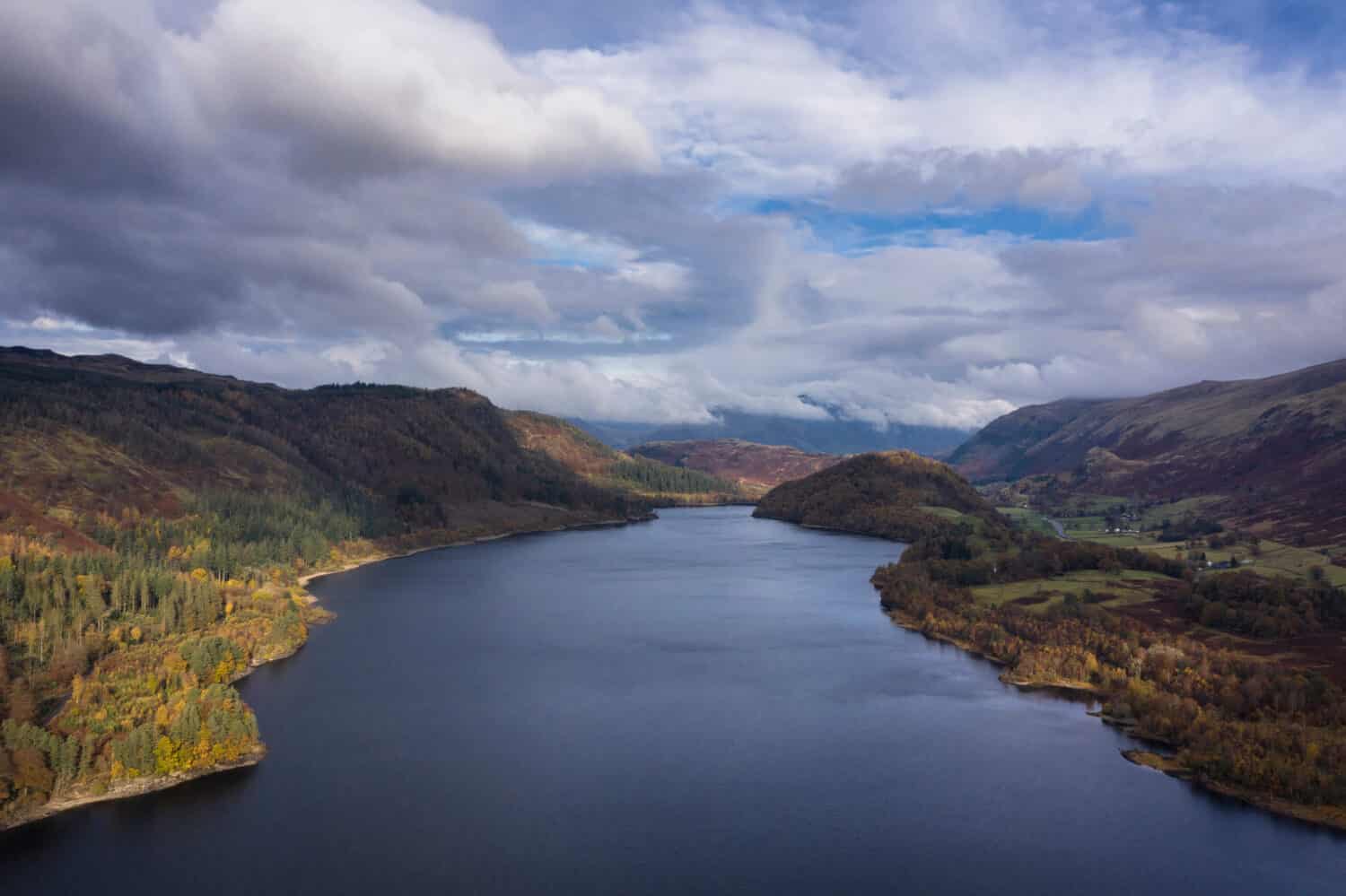
Thirlmere is stunningly beautiful, surrounded by the landscapes of the Lake District.
©Matt Gibson/Shutterstock.com
9. Chew Valley
Chew Valley Lake is a large reservoir located in Somerset, England. It is one of the major reservoirs in the Bristol Water supply system and plays a crucial role in providing water for the Bristol area and surrounding regions. The lake covers an area of approximately 1,200 acres (485 hectares).
Chew Valley Lake was created in the 1950s by damming the River Chew, principally to store water for the public water supply. Chew Valley Lake has excellent fishing opportunities, particularly for trout and pike. It has gained a reputation as one of the UK’s premier stillwater trout fisheries, attracting anglers from near and far. Though fishing is a significant activity at the lake, other watersports like sailing, windsurfing, and kayaking are illegal, in an effort to preserve the quality of the water for drinking purposes.
The lake is popular among birdwatchers. Chew Valley is a Site of Special Scientific Interest (SSSI) because it supports a wide variety of bird species. The Chew Valley Lake area offers several walking trails and designated bird blinds, which allow visitors to enjoy the abundant wildlife while minimizing disturbance to the animals.

Chew Valley supports a wide variety of bird species, like great crested grebes.
©Jamierpc/Shutterstock.com
The photo featured at the top of this post is © Michael Ting/Shutterstock.com
Thank you for reading! Have some feedback for us? Contact the AZ Animals editorial team.







